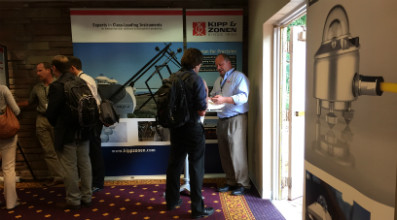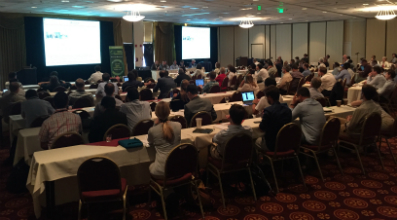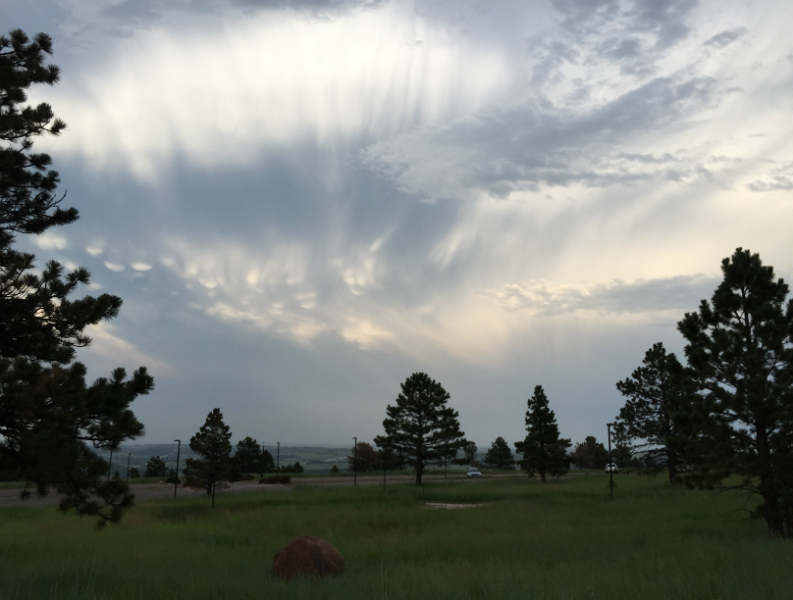I want to share some of my take aways from ICM 2015. I know that many of you are interested in conferences like this, but only a few actually decide, or have the time, to make the long trip to attend. Here are some impressions for you, so you have not missed out on it totally ;-).
Kipp & Zonen was one of the main sponsors and exhibitors of the event because of the strong position of the company’s instruments in both solar radiation and atmospheric measurements.
 On Monday the conference started with two parallel programs; an introduction of renewable energy to meteorologists and meteorology lectures for energy practitioners. Throughout the next days, there were many parallel sessions one could choose from. The main areas of interest in renewable energy were wind and solar. During the lunch breaks there were plenty of interesting poster sessions, plus an exhibition booth with a display of all kinds of Kipp & Zonen instruments.
On Monday the conference started with two parallel programs; an introduction of renewable energy to meteorologists and meteorology lectures for energy practitioners. Throughout the next days, there were many parallel sessions one could choose from. The main areas of interest in renewable energy were wind and solar. During the lunch breaks there were plenty of interesting poster sessions, plus an exhibition booth with a display of all kinds of Kipp & Zonen instruments.
Tuesday started with some excellent plenary sessions with regard to climate change and possible solutions. For me personally the most impressive speech was the one of Dr. Alexander MacDonald, who made a complete simulation of the USA, including an incredible amount of data on resource mapping (e.g. where are optimal wind and solar locations based on historical data) and high voltage DC grids.
 In his presentation Dr. McDonald showed that there is already an economically viable solution that can decrease by 86 % the current US CO2 emissions, by building wind and solar energy plants and a new electrical infrastructure. And, most impressively, with no extra costs compared to the current fossil energy system, including all the economics of initial investments, depreciation and maintenance. These sessions formed the context of the following days, and emphasized the importance of the research done in the overlapping fields where energy meets meteorology.
In his presentation Dr. McDonald showed that there is already an economically viable solution that can decrease by 86 % the current US CO2 emissions, by building wind and solar energy plants and a new electrical infrastructure. And, most impressively, with no extra costs compared to the current fossil energy system, including all the economics of initial investments, depreciation and maintenance. These sessions formed the context of the following days, and emphasized the importance of the research done in the overlapping fields where energy meets meteorology.
There were over 150 lectures of research efforts over the four days, and it is hard to make any summary from this five day conference. Being quite new to the meteorological area, I will share some of my own takeaways that you may recognize.
Solar energy; cloud detection
First of all, it became obvious that with the increase in solar power plants, and the huge investments involved with them, it is very important to have good weather predictions to maximize profit during operation. Especially short term cloud prediction, or better; the expected reduction in energy production due to the shadows projected by clouds, is a hot research topic all over the world.
Next to the instruments used (such as sky cameras of all qualities and with their own characteristics, pyranometers and solar trackers) the software models and data analysis of the instrument readings are most crucial. Some of the software developed also seemed dependent on a special camera and its settings, so generalisation of research outcomes should be carefully treated. Using multiple cameras and software gave results in detecting multiple cloud layers and the wind vectors of each layer. Cloud detection in the circumsolar area appeared to be a speciality of many researchers in modelling aerosol forecasts.
Wind energy; maximum power production
For wind, my main takeaway was that improvements in wind turbines will continue to be made, but it is not the main research topic any more. In thirty years or so wind turbine power grew from a few kW to 8 MW per turbine. One of the biggest research domains nowadays seems to be the interaction between windmills within a wind park; how they influence each other and how a park (once it is selected by resource mapping and local measurements) can be designed in the most optimal way for maximum power production throughout a whole year under many different weather conditions.
It was a full week of presentations from all over the world, and many get-to-know-each-other moments. A memorable one was the happy hour and dinner meeting in the magnificently located NCAR Mesa Lab. This was the place for the official launch of the WEMC; World Energy & Meteorological Council. The main purpose of WEMC is to enhance further interaction between the biannual conferences.
Kipp & Zonen was one of the few attending commercial businesses with a scientific orientation and, for us, the conference was more than an overview and refreshment of ongoing research. Some of the research actually stimulated us with ideas for new products and for co-operations with some of the attending scientific institutions.
I’ve gained new insights, knowledge, experience and inspiration for Kipp & Zonen’s product and market development. When we left the meeting full of ideas, the sky was loaded with mammatus clouds, a rare phenomenom in Dutch skies!

Xander van Mechelen is Business Development Manager at Kipp & Zonen and actively attends conferences and exhibitions in both solar energy and meteorology. The ICEM was a perfect combination of both.